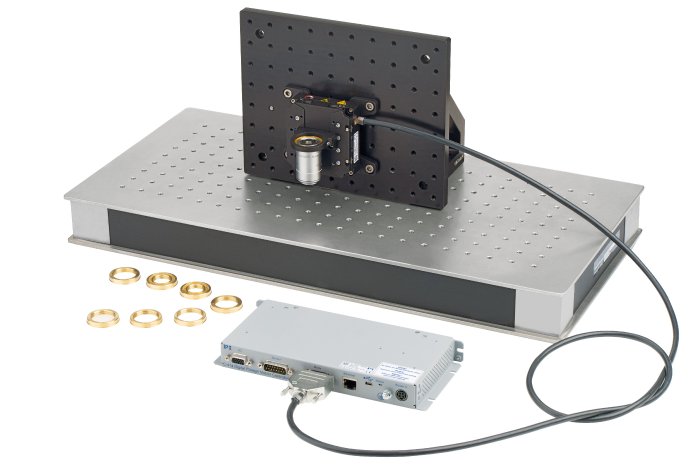The core element of the V-308 PIFOC is a single axis slider with high-precision lateral crossed roller guides placed on the base body. The slider is driven by a centered PIMag® voice coil motor, which was specifically developed for high dynamics. The 7 mm large travel range can be limited upwards and downwards with adjustable hard stops by the user. Acceleration is up to 8 m/s², the maximum velocity 200 mm/s. This results in step-and-settle times of below 15 msec for 100 nm and 250 nm step sizes at ±15 nm error band. Therefore, a very fast positioning of the focusing unit, very fast data acquisition, and high productivity can be achieved.
The high-resolution optical PIOne linear encoder is used to achieve the high precision requested. A minimum incremental motion of 10 nm and a bidirectional repeatability of 25 nm (at 100 nm travel) can be realized.
Magnetic Weight Force Compensation
A special feature of the new V-308 PIFOC is the magnetic weight force compensation. This ensures a levitation of the slider and mounted load without power supply and it so prevents an uncontrolled crash in case of a power failure or when switching off the controller. For a flexible use of the axis – when switching the objective, for example – the user can adjust the counteracting force and compensate an overall load (objective and holder) of up to 1 kg. Because of this, the axis acts as a horizontal axis even when being used vertically.
Easy Integration Thanks to a Compact Design and Versatile Accessories
With dimensions of 87 x 77 x 30 mm (H/W/D), the drive is very compact. An adapter plate ensures mounting on an optical bench or plate, with a metric or imperial hole pattern. Two different objective holders (for vertical or horizontal mounting) as well as a set of adapter rings for different diameter objectives, up to size M32 x 0.75, are available.
As a standard, the V-308 PIFOC is offered with the specially developed C-414 controller. Alternatively, the axis can be operated with ACS controllers with built-in EtherCAT functionality. Users can actively control servo control parameters ("gain scheduling"), which in addition with other ACS features such as ServoBoost, can further enhance the performance.


